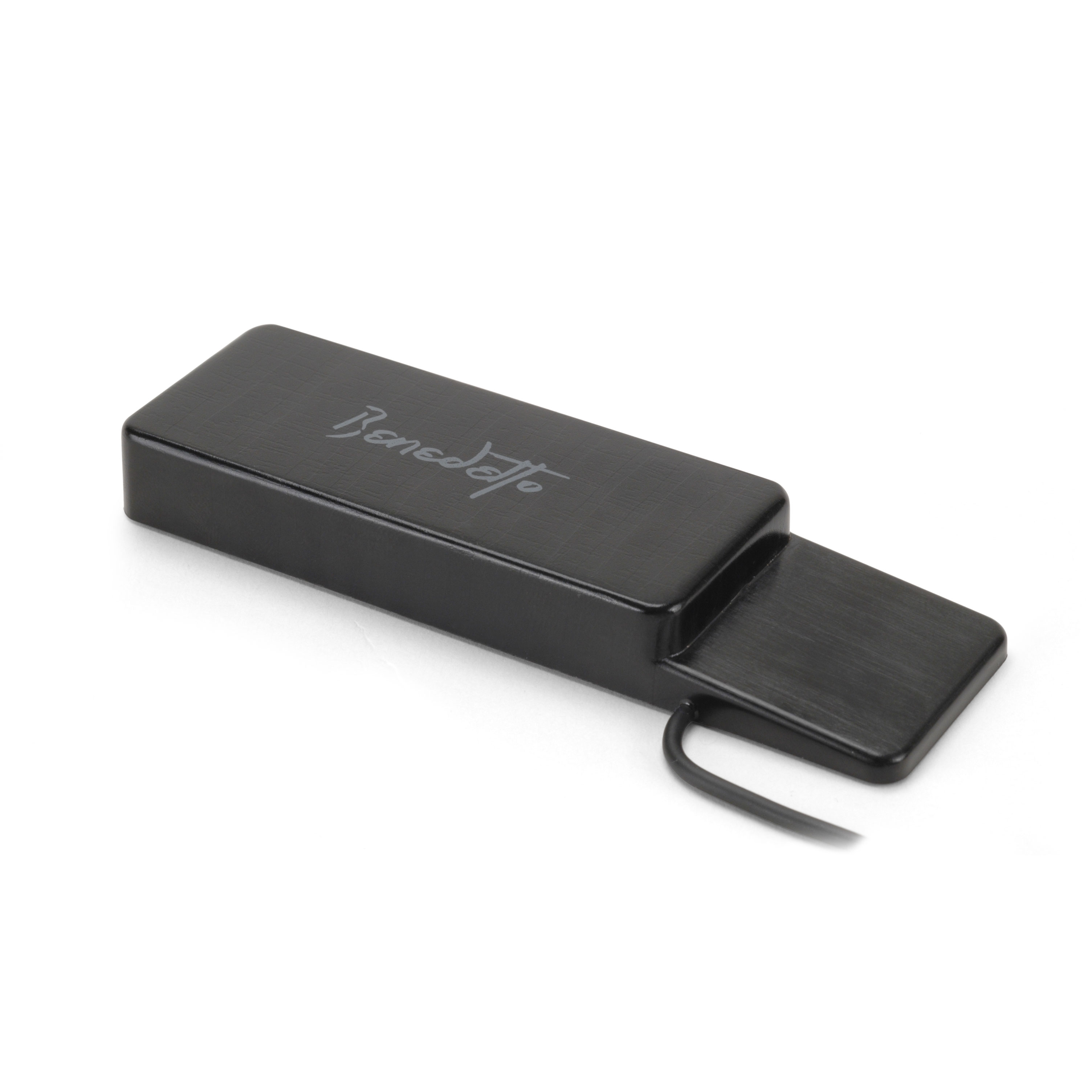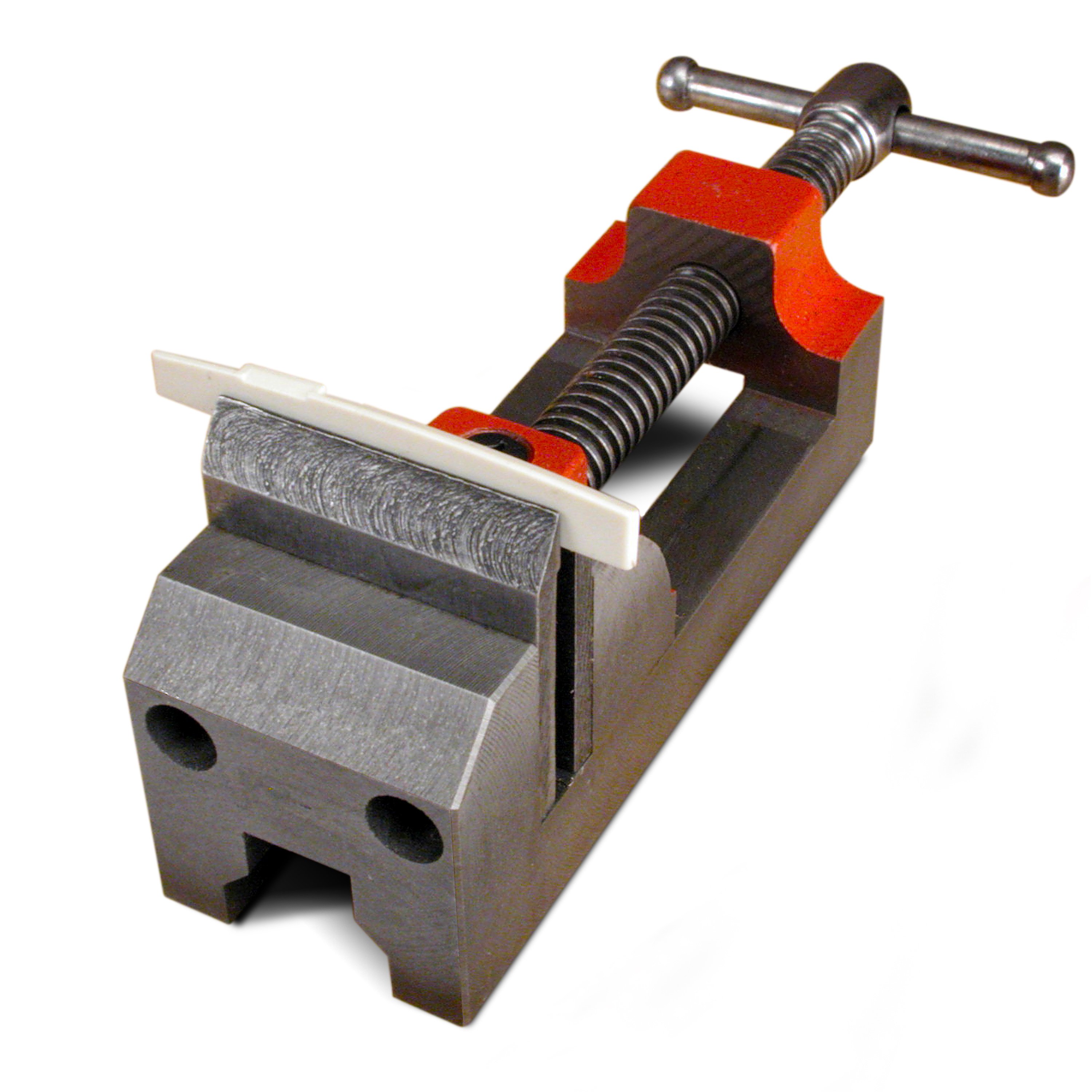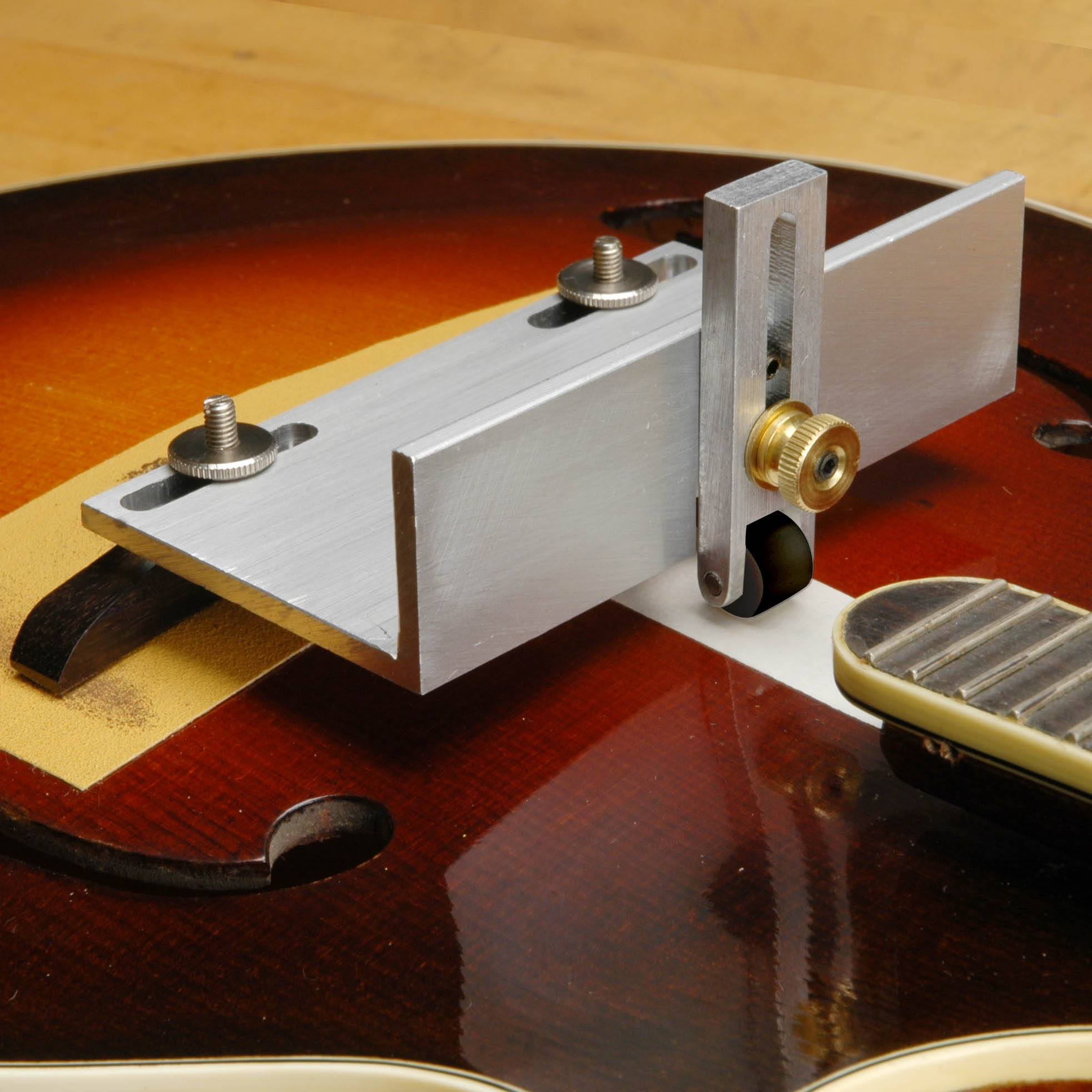Mixing active and passive pickups in a jazz guitar

My friend Sammy doesn’t like the sound of his archtop through an amp. “So I never take that guitar to gigs,” he says. “It’s a couch potato! I only play it while watching TV.”
Sammy’s going to replace his guitar’s original pickup. He wants the best of both worlds: a Benedetto jazz humbucker, plus an active transducer in the bridge. The Benedetto suspended pickup is passive, so it needs no preamp. But Sam’s also bought himself a Fishman bridge with a built-in transducer. That involves a preamp and battery, usually installed inside the body through a soundhole like so:
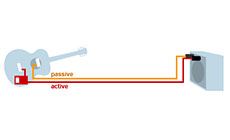
This guitar’s f-hole design won’t allow that, so we came up with an outboard solution using a stereo Y-cable. We used the "Y" at the amp end, with the active signal going into a Baggs Para Acoustic DI preamp:
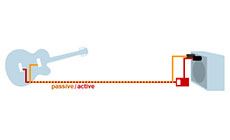
This guitar’s intonation was perfect, so before removing the bridge I made a record of the staggered string intonation points at the saddle. To do this, I used our Saddlematic tool in an unorthodox way: I put its pointers exactly on the two E strings, with a strip of clear plastic taped on the underside of the Saddlematic. On the plastic, I traced the remaining intonation points for the B, G, D, and A strings.
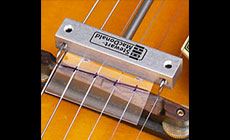
Before removing the bridge I used a string action gauge to measure the string height at the 12th fret so I could duplicate the setup later with the new bridge.
A new bridge base will rarely fit the archtop it’s intended for. You’ll need to fit it to the guitar top. The archtop bridge fitting jig is the tool for getting perfect results on this job.

Sammy also wanted to replace the guitar’s metal tailpiece with a lightweight ebony version. The Benedetto tailpiece installs with a fastener looped over the endpin, like a violin. For a string ground, I ran conductive copper tape on the underside of the tailpiece from the string notches to the brass nut on the tailpiece fastener — removing a bit of the plastic sleeve where the fastener hooks onto the metal endpin. A wire inside from the endpin to the output jack completed the ground.
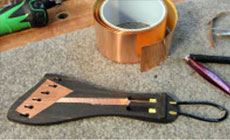
I traced my clear plastic record of the original string positions onto the new bridge saddle. After filing the two E string slots, I used a string spacing rule to space the inner four string widths proportionally.


I roughed in the saddle shape with a chisel, then fine-tuned it with shaping files.
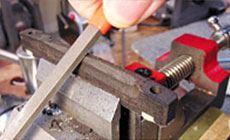
To hide the transducer’s output cable, I drilled a 1/8" hole through the bridge base and down through the top. I pressed a length of hollow brass tubing into the bridge base, with approximately 3/16" projecting through the bottom.

This not only served as a conduit for the wire, it also anchored the bridge so it wouldn’t shift from side to side (which had been an annoying problem for Sammy in the past). I snaked the transducer cable down this tube into the body, then back up through the treble F-hole to reach the pickguard-mounted volume control.
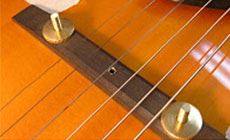
The Benedetto pickup’s mounting tab glues to the underside of the pickguard. This is a handmade pickup with a DC resistance of 9.5k — three times the output of Sammy’s old pickup! And the ebony color matches the new bridge and tailpiece.
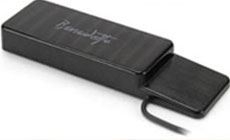
There was already a volume control mounted on the pickguard, but Sammy didn’t want any additional knobs in the way of his picking hand.
For the transducer, I mounted Schatten 500k thumbwheel volume/tone controls under the pickguard. Now each pickup has its own independent control. Their output cables travel through the F-hole to a stereo output jack on the side of the guitar.
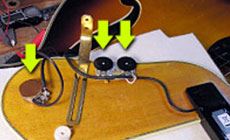
We tested the system using my old Gibson GA-6 amp. One plug from the Y-cable ran the humbucker directly to one channel on the amp. The other plug connected the Fishman bridge to the Baggs Para Acoustic DI preamp
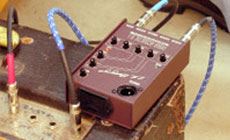

Let’s find out what Sammy thinks...
Hey Sammy, is it sounding good enough to take onstage now? Sammy? Sammy?
He can’t hear me over the guitar, so it looks like Sammy’s happy!!




